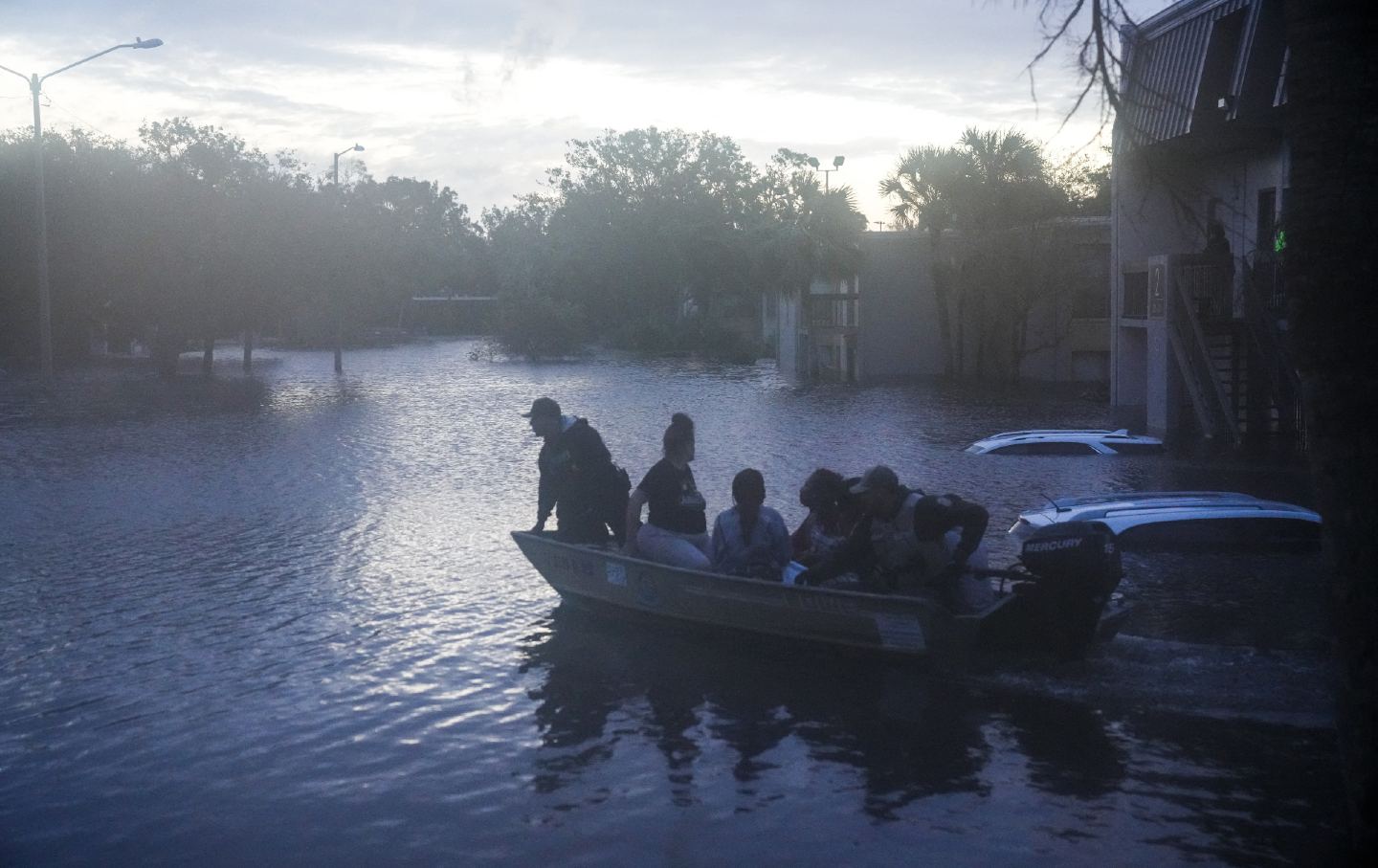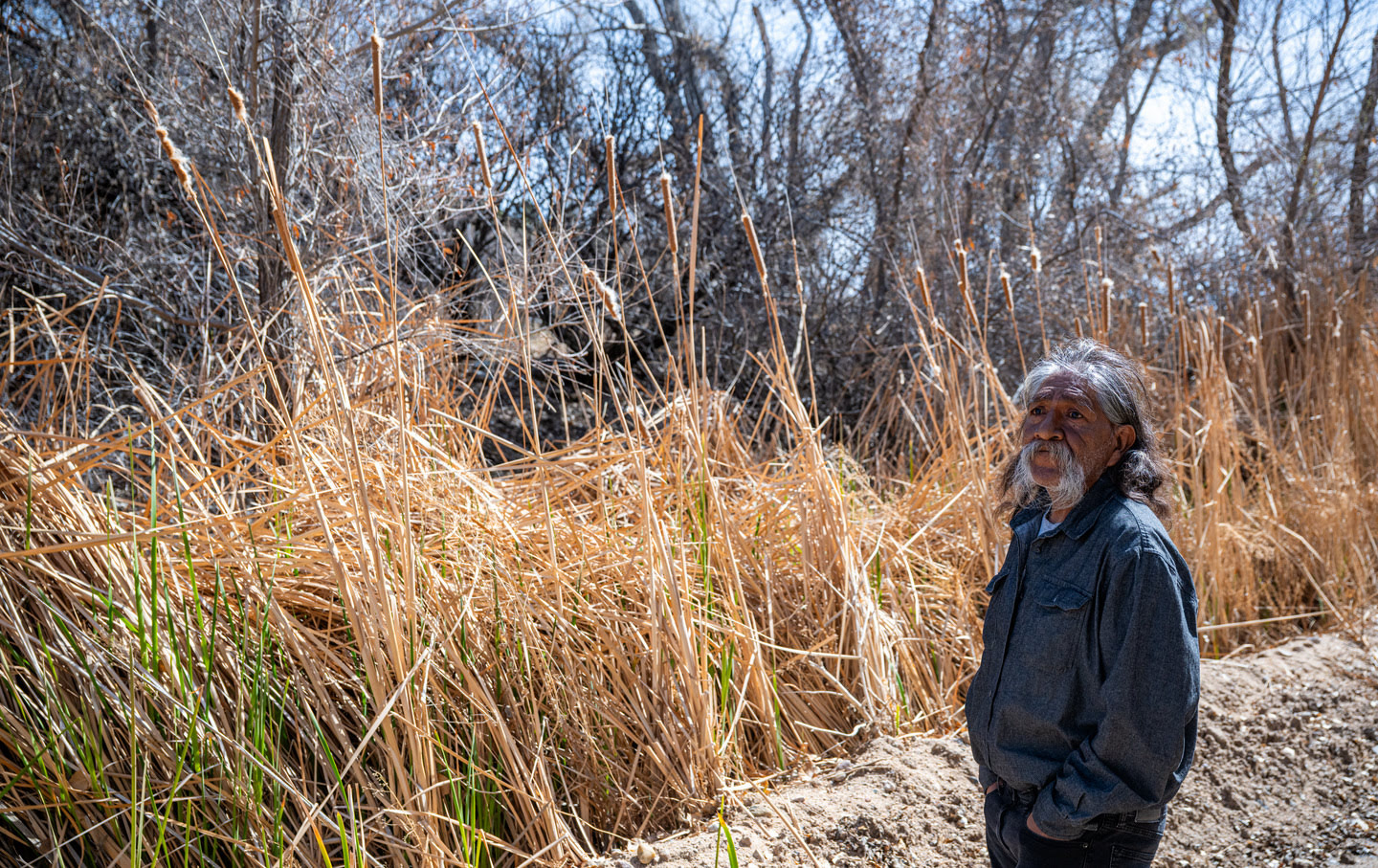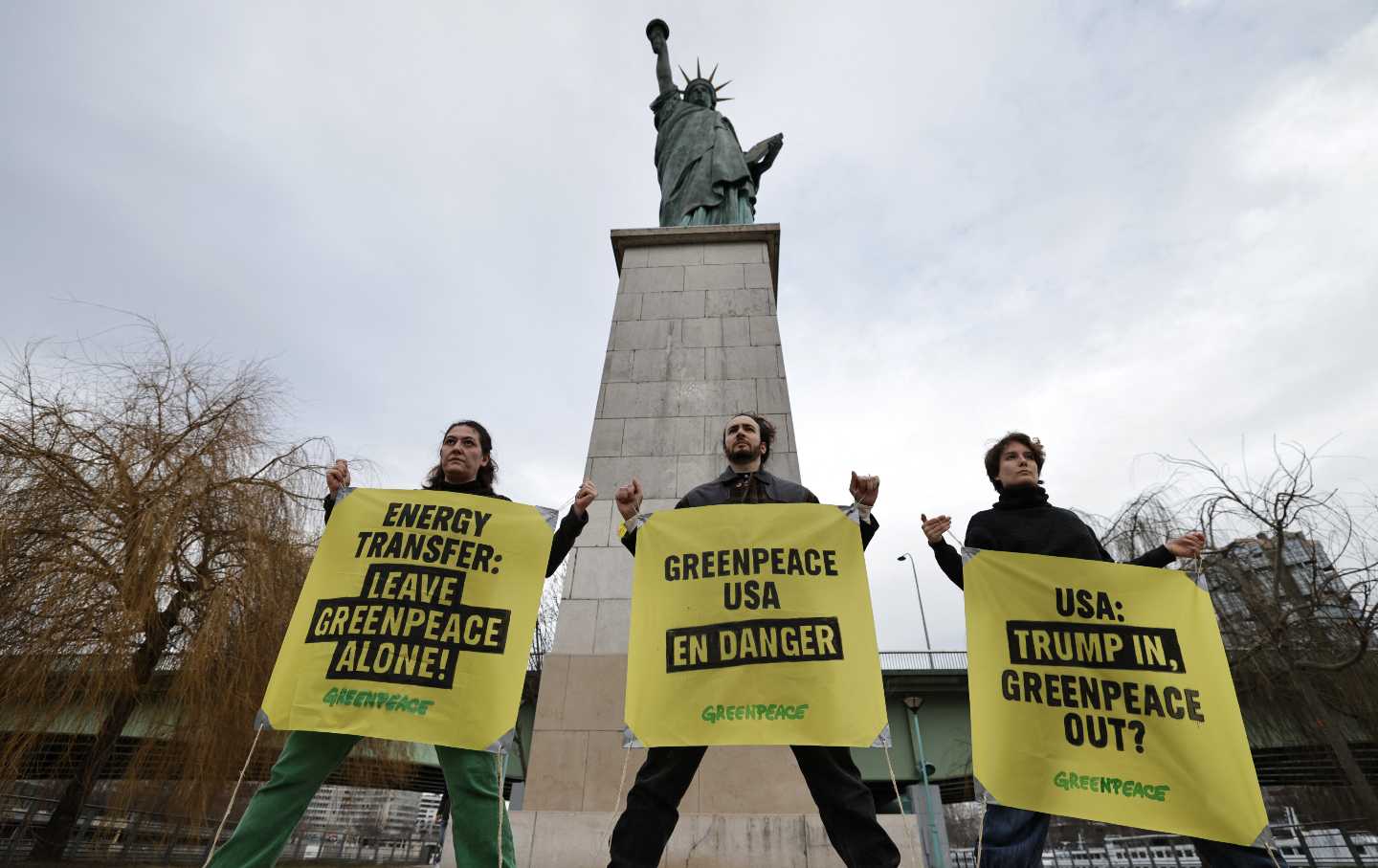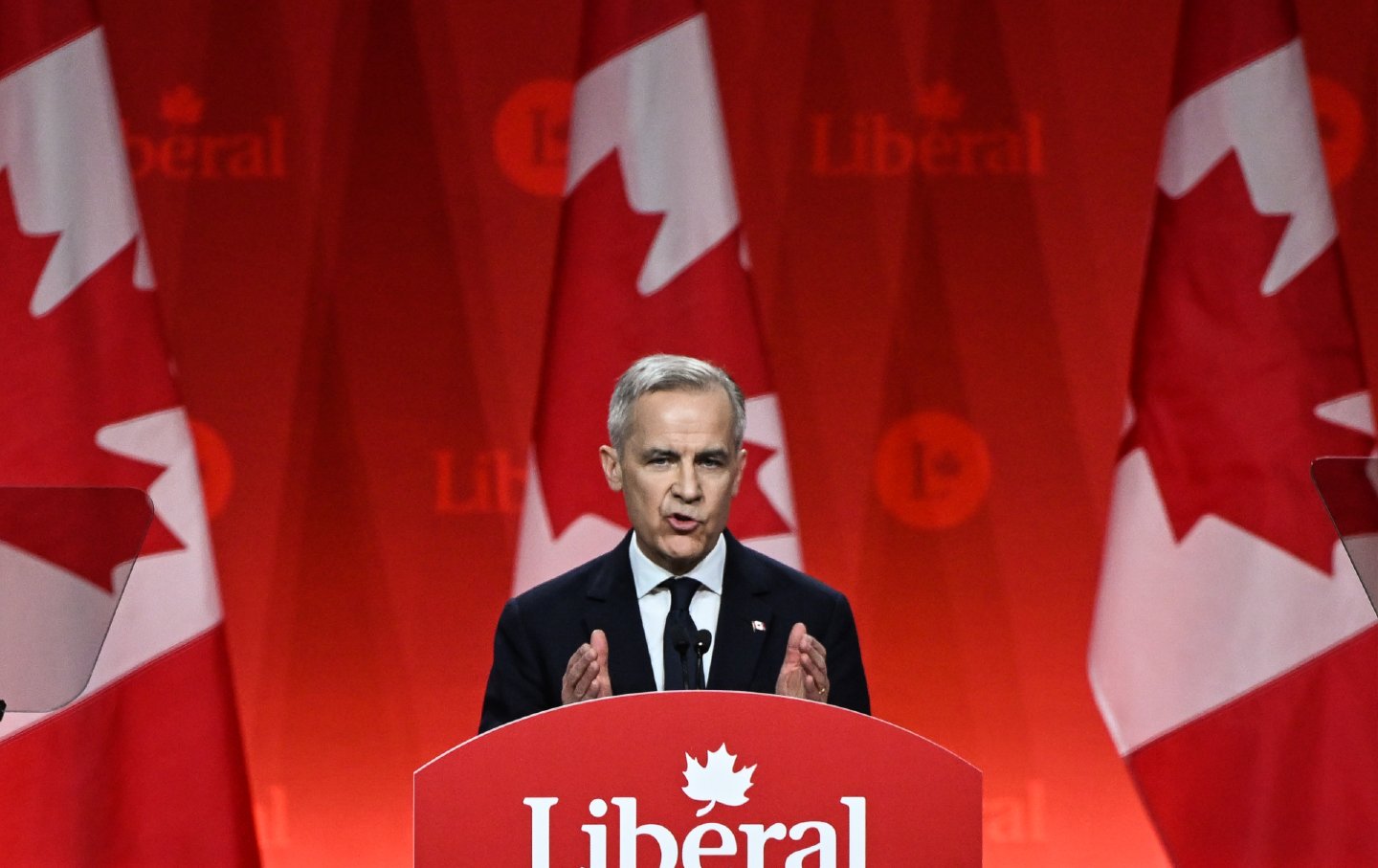Florida Lawmakers’ Climate Denialism Is Pure, Unadulterated Lunacy
Climate change will only make future hurricane seasons worse. So why are Florida legislators pretending like nothing’s amiss?

Residents are rescued on October 10, 2024, from a flooded apartment complex in Clearwater, Florida, after the passage of Hurricane Milton.
(Bryan R. Smith / AFP via Getty Images)
Hurricanes Helene and Milton were both scarier than any Halloween movie you might view this month. Scientists say both powerful storms were fueled by climate change.
But for Florida state legislators, climate change is as fictional as Freddy Kreuger. This spring, Governor Ron DeSantis, with the state legislature, passed a law that deleted most references to climate change from state law.
The sponsors for this disappearing act were the dynamic duo of Representative Bobby Payne and Senator Jay Collins, whom I have come to think of as the Penn & Teller of Tallahassee. By removing the words “climate change” and “greenhouse gas emissions,” their law made the whole issue go “poof!” It was just like that time David Copperfield made the Statue of Liberty vanish.
There’s just one teensy little problem: The Statue of Liberty trick was just an illusion. So was this. Outside of our phallus-shaped Capitol, climate change, as the recent hurricanes have made painfully clear, isn’t going anywhere.
“Sea surface temperatures in the Atlantic, Caribbean, and the Gulf of Mexico are all running at or near-record levels this year, just as they did last year,” said David Zierden, Florida’s state climatologist. Zierden runs the Florida Climate Center at Florida State University, which monitors weather and climate data and provides research on climate change in the region. (I’m happy to report that our legislative lunkheads haven’t deleted his job the way they edited state law—yet.)
The oceans have been soaking up much of the heat from the steady warming of our globe. Hurricanes draw their power from the heat of the water they pass over, and with the Gulf of Mexico now the hottest it has ever been in recorded history, the recent storms were able to rapidly intensify. How rapidly? This is the way The New York Times reported on Helene: “In less than a day, Helene transformed from a Category 1 hurricane Thursday morning to a Category 4 storm on Thursday afternoon, which would make it the strongest ever to hit the Big Bend coast of Florida.”
Milton followed the same playbook. It grew from barely a hurricane to a massive Category 5 killer in less than 10 hours. It was “everything that you would want if you’re looking for a storm to go absolutely berserk,” Colorado State University hurricane researcher Phil Klotzbach told the Associated Press.
The warmth in the water also makes the atmosphere hold more water, making it extremely moist. That’s how we wind up with storms dumping so much more rain the way Helene did, Zierden explained. “That’s a piece of what’s happened in North Carolina,” he said.
Finally, Zierden said, there’s the role that the rising sea level plays in making the storm surge so much worse. “When everyone’s talking about the record storm surge,” he told me, “at least a foot of that is caused by sea level rise.”
Now put it all together: Hot water for power, moist air for heavy rain, and rising seas for the massive storm surge. Can you see now how these storms were a creation of our altered climate, just as surely as the fearsome Creature was built by Dr. Frankenstein?
Other scientists have come to the same conclusion. In fact, one recently published scientific study found that between 1979 and 2020 there’d been a global increase in near-shore intensification in all kinds of cyclones, fueled by the rising heat in the oceans. The study predicted that the phenomenon would continue to increase—not just in Florida, but everywhere.
None of this should be a surprise. Sixty federal scientists predicted all this 10 years ago in the Third National Climate Assessment. And despite DeSantis and the legislature’s bizarre elisions, we see evidence of climate change all the time here in Florida. You can witness the warning signs of our warming world in the altered gender balance of sea turtle hatchlings, which is controlled by the temperature of the beach sand where they hatch. You could even detect it in the increasingly acidic quality of the seawater surrounding Florida.
You can see even more ways that it’s harming Florida by looking at a new mapping tool called Florida’s Climate Future. The tool, produced by the Environmental Defense Fund, looks at such factors as our increasing heat, more frequent flooding, and the rising cost of electricity. “We built this because we wanted to make it clear to Floridians that we’re already picking up the tab for climate impacts to our state,” said Dawn Shirreffs, Florida director of the EDF.
I was particularly curious to see how climate change is affecting the home districts of our two political Houdinis. Putnam County, home of Representative Payne, who’s worked for years for one of the few Florida power plants still burning coal, saw 85 days last year when the heat index topped 100 degrees. In Hillsborough County, Senator Collins’s district, the number of days over 100 degrees was a whopping 107. That’s four degrees hotter than neighboring Pinellas County, where DeSantis grew up, and which, alongside Hillsborough, was right in Milton’s path.
DeSantis has wavered when it comes to this subject. As local outlet Florida Politics once noted, his positions “shift like Florida’s coastline during storm surge events.” When he was running for governor the first time, he told WLRN-FM, “I am not a global warming person. I do not want that label on me.”
But the Dunedin denialist was fine with handing out millions of dollars in deals to companies tasked with papering over the symptoms, such as installing pumps and pipes to help waterfront landowners cope with rising sea levels. Don’t touch those fossil fuels that are responsible, though—he’s opposed to that. As he said in 2021, “We are not doing any left-wing stuff.”
Then, during his brief presidential campaign—emphasis on “pain” —he took a new position: Climate change is real after all, but the way to fix it is by burning more of the stuff that’s been making our climate change. Specifically, he called for power plants to place a greater reliance on natural gas. Natural gas burns cleaner than coal or oil—that is, it burns relatively less CO2. But it is still a source of bad stuff for the atmosphere: Not only does its burning still emit CO2, but its production leaks large amounts of methane into the atmosphere. This is like announcing that instead of driving off a cliff at 90 miles per hour, you’re in favor of driving off that same cliff, but at 60 miles per hour.
Popular
“swipe left below to view more authors”Swipe →Which brings us back to this year, when DeSantis signed Payne and Collins’s bill deleting the words from state law. After, he boasted in a post on X, “We’re restoring sanity in our approach to energy and rejecting the agenda of the radical green zealots.”
But the “radical green zealots” who put that language into state law in the late 2000s were his fellow Republicans. They weren’t wearing tie-dyed shirts and sandals. They had on blue blazers, rep ties, and tassel loafers. This wasn’t mere lip service, either. In 2011, the legislature passed a bill calling for the state to pursue a cap-and-trade system to limit emissions from power companies. (Unfortunately, the next governor, Tea Party darling Rick Scott, pulled the plug on this.)
These folks could see that rising seas and temperatures were becoming a serious threat to Florida. That’s why they set goals to cut the use of fossil fuels and encourage clean alternatives like solar. But this kind of thinking died with the Trump takeover of the Republican Party.
Incidentally, Florida’s utilities are building unprecedented numbers of solar farms right now. Florida Power & Light, one of the main utility companies in the state, for instance, has the largest array of solar plants in the country. It has opened 78 solar centers in Florida to generate about 5,700 megawatts of power for 31 of Florida’s 67 counties. We’re finally starting to live up to our nickname of the Sunshine State.
But don’t tell DeSantis. He doesn’t want to hear it.
During a news conference on October 10, he contended that linking warmer oceans to the power of these hurricanes was just the flip side of those kooks who think the federal government controls the weather. “Some people think the government can do this, and others think it’s all because of fossil fuels,” he complained. “The reality is what we see. There’s precedent for all this in history. It is hurricane season. You are going to have tropical weather.”
With fossil fuel fools like DeSantis running the show, is it any wonder that we’re in such hot water?







